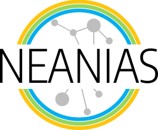The deliverable ·Space Thematic Services Assessment Report, overall report on the assessment and evaluation of sector services from user perspective·, produced in the context of WP4 “Space Research Services” of NEANIAS project, has been submitted to the EU.
The NEANIAS WP4 “Space Research Services” is focused on the co-design of three innovative set of services in the Space environment for user-communities for Research and Development (R&D). The space services deliver a springboard of tools to enrich the workflows of a wide range of targeted users from academic/research institutions to industrial stakeholders, e.g., aerospace engineering and related technology companies, but also national space agencies and public outreach bodies, e.g., space museums and planetariums.
The first set of services, S1, named “SPACE-VIS”, provide required functionalities that enable efficient and scalable visual discovery, exposed through advanced interaction paradigms, such as the visual analytic, also exploiting virtual reality. Services belonging to S1 have been developed in Task T4.2 “S1 - FAIR Data Management and visualization for complex data and metadata service implementation” starting from TRL6 software modules such as the ViaLactea framework, Astra Data Navigator and the ADAM platform.
The second set of services, S2, named “SPACE-MOS” deliver multi-dimensional space maps through novel mosaicking techniques (i.e., stitching of multidimensional images/maps with overlapping fields of view) to a variety of prospective users/customers (e.g., mining & robotic engineers, mobile telecommunications, space scientists). Services belonging to S2 have been developed in Task T4.3 “S2 - Map making and mosaicking for multidimensional images service implementation” starting from TRL6 software modules such as Montage, ISIS3, ASP and the ADAM Data Processing System.
Finally, the S3 services, named “SPACE-ML”, deliver structure detection capabilities addressing the researchers needs to identify and classify, in an efficient way, specific structures of interest. Services belonging to S3 have been developed in Task T4.4 “S3 - Structure detection on large map images with machine learning techniques service implementation” starting from TRL6 software modules such as CAESAR, CUTEX, VLFF and well-known machine learning and deep learning algorithms and methods.
Services and software development plan as well as the validation strategy have been guided by Task 4.1 “Space sector user requirements, service co-design and gap analysis” and outcomes of Deliverables D4.1 [1] and D4.2[13] . The Space Services now reached release #3 and a most mature stage TRL8. All the testing and quality assessment has been crucial in reaching this maturity and has been performed within task T4.5 “Space sector testing & assessment”.
The submitted document is a final overall report on the assessment and evaluation of the NEANIAS SPACE services mainly from user perspective but also including their technical assessment. Assessment and evaluations processes have been performed for each of the SPACE services release cycles (from release #1 to the latest release #3) involving users both internal to the NEANIAS consortium but also external to the consortium mainly belonging to academic and research institutes. Also, user feedbacks have been collected and, finally, a technical assessment has been performed thanks to template checklists made available by WP7.
Learn more about NEANIAS Space.
